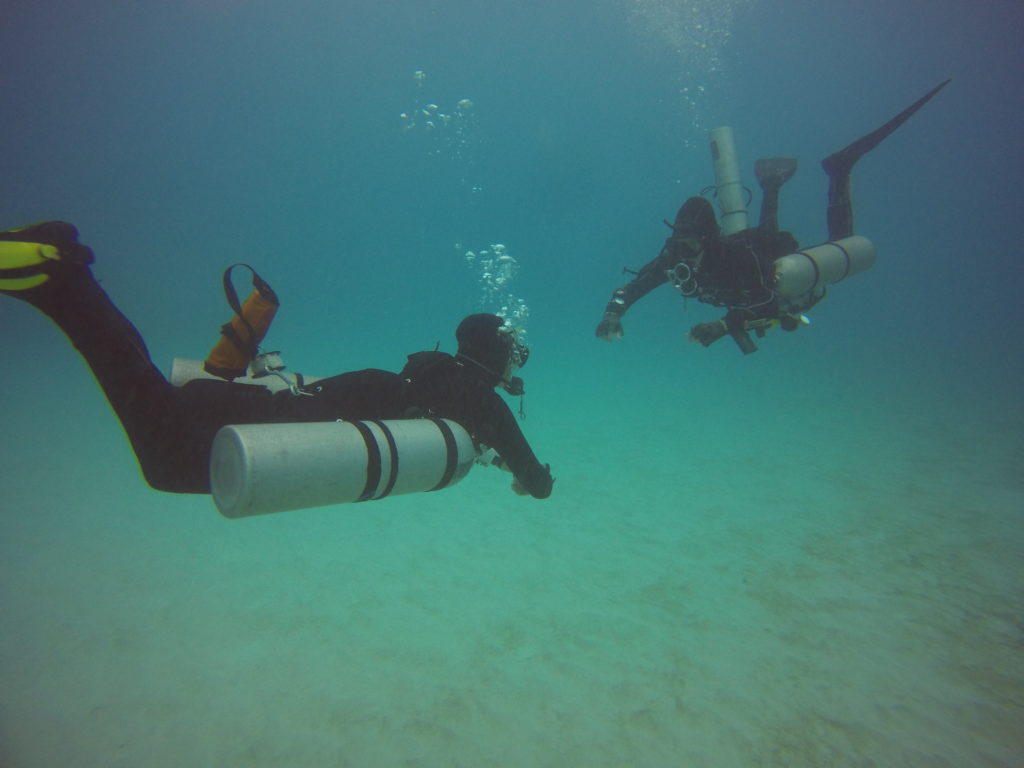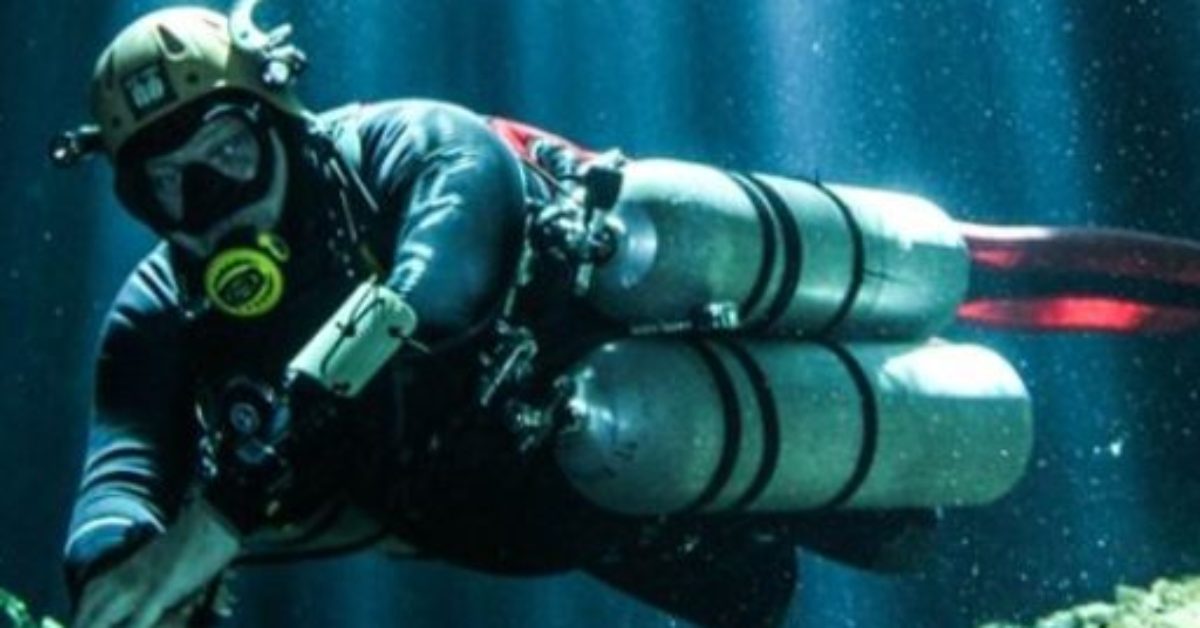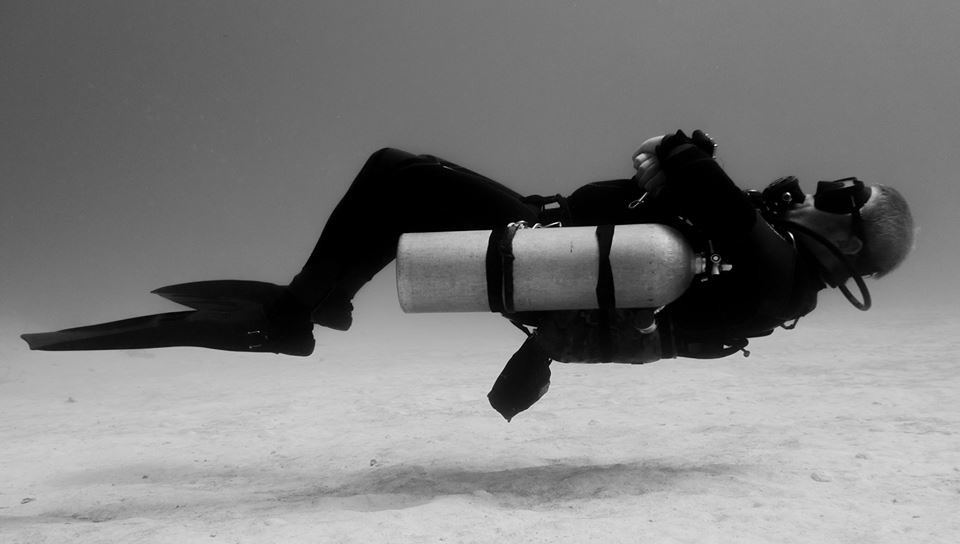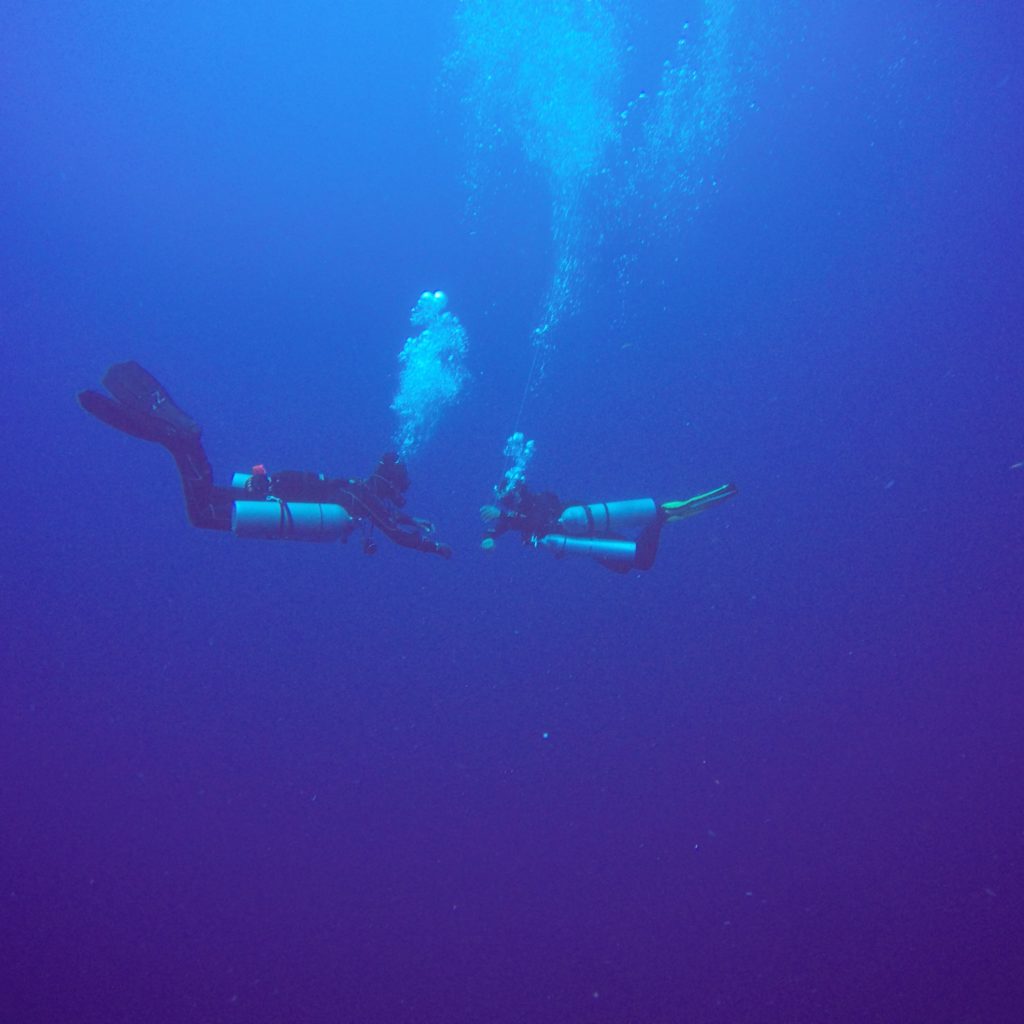Originally, sidemount diving was meant to help extreme divers to access narrow sections of caves. Nonetheless, this technique has been discovered by more or less experienced divers. Taking also into consideration the technology progress in equipment manufacturing and materials, we have to notice that sidemount diving has become a common application. Divers of all levels of experience can access it today.
Sidemount is defined as a special configuration of the gear that results in the diver wearing a tank on each body side rather than having one huge tank mounted on his back. Sidemount tanks start just below the shoulders and lie along the hips. The configuration of these tanks is different than the one of the backmount setup. The diver has two independent sources of gas and will breathe first from one of them and then from the other. This is achieved through two regulators that keep switching back and forth throughout the entire duration of the dive. The tanks have special clips on their bottoms, allowing them to get attached to the body. The top of the tank is also secure with a bungee system, enabling the tanks to ride along with the diver.
The first people to realize the advantages of sidemount diving were advanced professional divers who observed that wearing the tanks on the sides of the body enabled them to keep a lower profile in water than their usual backmounted tanks, thus allowing the exploration of smaller spaces without getting jammed and without disturbing the natural balance of the ecosystem. Wreck divers discovered the advantages of being able to unclip one of the tanks and push it through small hatchways. Cave divers enjoyed the same benefits when trying to find their way through low or narrow passageways. Reef divers took advantage of this new system to improve their navigation of tight coral canyons while keeping coral contact to a minimum.
But the most important of all, these specialty divers recognized the safety benefits of the sidemount diving system. This new configuration enables the diver to access the tank valves much easier in emergency situations. There are divers who carry sidemount “bailout bottles” on them specifically to keep them safe in case of emergency. Thanks to the sidemount rigs, divers can swap out extra tanks with ease. Moreover, the tanks are positioned in a way that offers the diver’s head a greater range of motion, hence improving their comfort and enhancing their vision.
Last but not least, one of the advantages of sidemount gear is the superior management of what can be considered a heavy load. Taking into consideration that the average technical rig has a weight of 130 lbs., it’s easy to understand why so many divers find this system so appealing. They can have their tanks placed ahead of them in the water, so that they can dive wearing nothing else than their basic harness system. Once they reach the bottom, they can easily attach the tanks by clipping them in, as their weight is reduced through buoyancy. By the end of the dive, they can detach their tanks, so they can exit the water without having to carry any heavy load. Smaller and elderly persons are only two examples of demographics that find sidemount diving a great helper.

As rebreather diving gains in popularity, sidemount configurations become even more sought-after, as they prove to be an excellent fit to this diving technique. As rebreather hardware has a cluttered front, the sidemount tanks become extremely convenient, as they can make a good emergency air supply. These sidemount tanks can also serve as ballast, enabling the divers to gain more control over their center of gravity.
Is There A Need For Training?
Sidemount diving isn’t different than any other form of specialized diving. This is why divers should seek for training, in order to learn the basics of this method. Experienced technical divers who have already used gas management systems and multiple tanks may have an easier time at figuring out this new equipment. Nonetheless, it is up to the diver to decide whether he or she can cope with the challenges of sidemount diving by themselves or they should seek for expert training provided by a skilled instructor.
Divers who aren’t technically trained must enroll in a structured course. They will be trained to remove a bottle underwater and swim while pushing it in front of their body, among many other maneuvers and tactics required by the sidemount diving equipment configuration. An expert instructor can help them understand the basics of gas management, air sharing and deploying a surface marker. The instructor will help them master even the finest nuances of configuring the rig and of setting up the tanks. The typical course is run over two days.
Divers should pick an instructor who is experienced in the dive environment they are going to work in. Sidemounting from a boat is different than sidemounting from a cave or a wreck, so it’s always a good idea to receive the specialized training that suits your needs.



